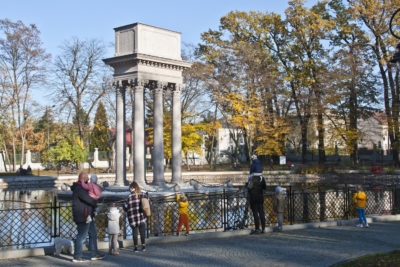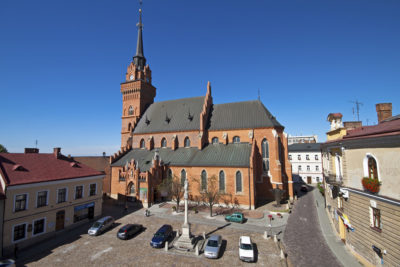Today, while walking the streets of Tarnów, you can recognize the remnants of centuries passed like separate stones in a colorful mosaic. In the peaceful quiet of the ancient city, you can hear the lingering voices of heroes come and gone like: the wise Spicymir Leliwita, who founded Tarnów in 1330, the great commander and politician Hetman Jan Tarnowski, the relentless and widely respected freedom fighter General Joseph Bem , and the intelligent historian Józef Szujski. Also, one might stumble upon the legacies of: Jakub Szela, the cursed leader of the Peasant Riot of 1846; Jan Szczepanik , inspired inventor; Wincety Witos, charismatic politician and leader of the peasants movement; Henryk Sucharski, just mayor of the Polish Army and Roman Brandstaetter, soulful writer.


Throughout the centuries, Tarnów has served as a haven for a variety of people: Jews, Germans, Ukrainians, Scotsmen, Austrians, Czechs and a multitude of other. Each nationality and culture has left its own unique mark on Tarnów, evident in architecture and traditions. The sites of the city can be viewed by several different routes. For example one can visit all of the Renaissance structures one day, and then experience the visible legacy of the independence fighter General Joseph Bem and the Polish-Hungarian alliance. Yet another tour route is along the structural remains of Jewish life and culture , which stands as a testament of a thriving Jewish community once living in Tarnów. One can visit the ruins of an ancient synagogue and also reflect at the Jewish cemetery, which commemorates the deaths of thousands of Jewish people in WWII with a large stone monument.

In the older area of Tarnów, there are incredible examples of high art that adorn the churches and the Cathedral , including the ornate monuments of the Tarnowski and Ostrogski families. In the area near the Cathedral you will notice the Diocesan Museum , which houses a priceless collection of ecclesiastic art, and the Renaissance town hall and tenement houses in the Market Square . And last but not least, a visit to the Ethnography Museum and its exhibitions on the history and culture of the Gypsies, the only permanent exhibition of that kind in Europe.

Take an evening stroll in the burnt orange glow of setting sun and experience Tarnów at its best. The iron street lamps patiently await their time of illumination as they have every day for centuries, while classical music spills out onto the cobblestone street from the open doors of concert halls. You wander into a dimly lit café, instantly engulfed by the rich smell of kielbasa grilled with onions, and you take a seat at an open table. After drinking a goblet of Hungarian wine, continuously flowing here since before anyone can remember, you exit the café and are amazed by the fantastical site of illuminated towers, tenement houses, turrets, and battlements. You take a deep breath, inhaling the bitter mountain breeze that injects a forgotten life into your thirsty veins, and you suddenly realize that you have fallen in love with this city.
Fine wooden architecture is abundant in the Malopolska region. We would like to invite you on a tour of the uniquely beautiful wooden structures within the city of Tarnów. Churches were erected in Gothic style as a one-nave structures with a triangular, enclosed presbytery and a tower. The buildings were often surrounded with arcades used by pilgrims as a shelter.